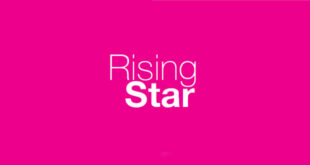Every month in Levelling Up, we bring you cherry picked advice to help you reach the next level in your career. This month, Anisa Sanusi, UI/UX designer at Hutch Games, explains what it takes to succeed in these fields and why you should collect resources from outside of video games
What is your job role and how would you describe your typical day at work?
I work as a UI/UX designer at Hutch, where we make free-to-play racing games for mobile. Typically, for UI work, we tend to have sprints dedicated to specific features on the game we’re currently working on. We’ll have a kick off meeting with our product owner and game designers so that we all understand the feature we’re building and, from their design documents, we work out some functional UX wireframes to get a general feel of the game flow. Then we make some high fidelity UI mock ups, where we get to experiment with different visual styles, typography and colour schematics. Because we’re a small team, I also do all of the implementations of the UI in Unity, including the animation and sometimes visual effects. I love that my job is very involved with other departments like design, art and programmers – we have a great time working together.
What qualifications and/or experience do you need to land this job?
I graduated with a degree in Animation, where my final year project was on 2D animation. I worked a lot with vector art which had a lot of overlap with UI work. I’ve always had a knack for graphic design and typography, so when I got my first games job as a 2D artist, it was a very natural progression to UI work. Soon after I started digging into UX – all of which was either learnt on the job or self taught during my own hours! I also love reading and collecting resources from UI/UX designers outside of video games – different perspectives help with a better understanding of the overall craft.
“ I am very sensitive to any form of arrogance. If I need to work 40 hours a week with someone, we need to be able to communicate and get along.”
If you were interviewing someone for your team, what would you look for?
Usually we can get the gist of an applicant’s technical abilities and artistic style through their portfolios. I favour those who have distinctly curated work and a beautifully presented CV. Part of UI work is making bland information look well presented through sleek design after all. Interviews are to see if you’re the right character fit. I am very sensitive to any form of arrogance, because if I need to work 40 hours a week with someone, we need to be able to communicate and get along. Enthusiasm, humility and the vulnerability to admit that you don’t know something, coupled with the eagerness to learn – those are the traits I like.
What opportunities are there for career progression?
UI/UX roles vary according to the size of your company. If you work in triple-A with hundreds of employees, you have a chance at advancing up that ladder to be a senior, principle, lead or even head of UI/UX. It’s not unheard of for people to branch off into other areas like game design, concept art or even user research. With smaller companies, you tend to wear multiple hats and have a bigger say in certain decisions. These days there’s a lot of freelance UI/UX designers who are hired guns for however long a project calls for them. It’s pretty flexible and you tend to find what suits you as a game dev somewhere along the line.
Want to talk about your career and inspire people to follow the same path? Contact Marie Dealessandri at marie.dealessandri@biz-media.co.uk

 MCV/DEVELOP News, events, research and jobs from the games industry
MCV/DEVELOP News, events, research and jobs from the games industry




